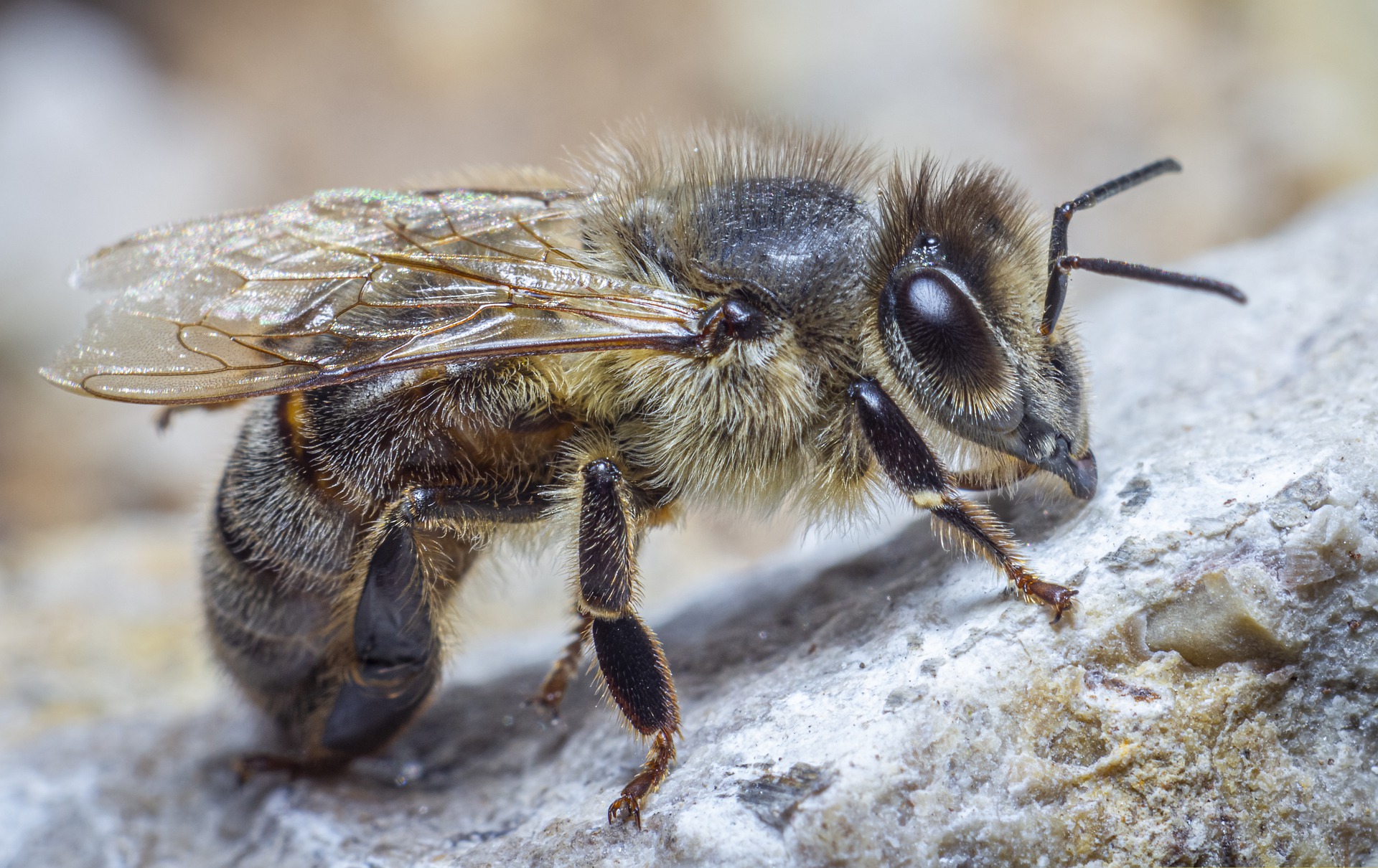
Western Honeybee (Apis mellifera) © Pixar Bay
Bees are the most important pollinators for both wild and cultivated plants. According to the United Nations Environment Program (UNEP), more than 70 out of 100 crops that make up 90% of the world’s food depend on pollination from bees. This includes a variety of crops such as fruits, vegetables and nuts, and given that these foods are also used to feed large amounts of edible livestock, we can predict the effect of bee pollination on the food we consume.
Since the late 1990s, there have been reports that the number of bees has declined significantly. What was initially observed in Europe and the United States has gradually spread to Asia and Africa. As it is directly linked to the problem of human food resources, news about the decline in the number of bees has been receiving great attention. Experts say that several causes such as human destruction of nature, use of pesticides, pollution, and global warming have had a complex impact.
In addition to this, the Varroa destructor and its virus are also known to have an effect on the decline in the number of bees. These ticks, which lived mainly in Asia, began to spread to Western Europe and North America in the late 1970s, and after that, wild bees in the region were almost endangered.
On the other hand, the question was raised as to whether this was caused by the inability to adapt to environmental changes due to the so-called’population bottleneck’, in which the genetic diversity of bees in Western Europe is reduced after only a part of the population survives. There are also reports that the biodiversity of insects has declined significantly as the scale of agriculture in Europe increased in the late 20th century.
At the end of the 20th century, there were various changes in the beekeeping industry as well.It was around this time that various chemicals began to be used, such as spraying insecticides or antibiotics to the beehives to remove parasitic mites from bees. It was a time when the work of cultivating in new areas also became frequent. For example, the M-series honeybees (Apis mellifera mellifera), which were native to Europe, were replaced by the C-series (Apis mellifera carnica).
In order to know how the genome of bees has changed according to these changes, it is best to compare and analyze the genomes of bees from the past to the present.
A recent paper published in the journal Genome Biology and Evolution (GBE) obtained answers to questions about their genetic diversity and adaptation by comparing and analyzing the genome sequences of Western honey bees from the past to the latest.
The genomes of 22 M-series bees collected from 1879 to 1959 and stored in the Swiss Museum of Natural History were compared with 40 recent M-series bees, and 36 individuals of two honey bee species, C and L (Apis mellifera ligustica). It was analyzed.
First, the researchers analyzed the mitochondrial genomes of M-series museum specimens, and found that two of them were classified as C-series mitochondria. This was a result suggesting that the M-series bees, which are native bees in the region, began to mate with each other after the C-series bees came in due to the beekeeping industry.
The researchers also calculated the genetic diversity from the bees’ genome. Recent M-series bees have a higher genetic diversity than museum specimens, which is interpreted as having the potential for recent bees to better adapt to the environment.
It is difficult to specify the reason why genetic diversity has increased further, but the genetic characteristics of bees with a high genetic recombination rate and the process of breeding with native bees by bees imported from other regions by human beekeeping have a complex effect. The researchers interpret it as crazy. Research results also revealed that some M-line bees were genetically mixed with C-line bees, which immediately increased the level of genetic diversity.
In addition, the researchers revealed that there seems to be natural selection pressure from recent bees through a comparison of genomes between museum bees and recent bees before the beekeeping industry became active. Among the genes with these genetic signatures were those related to immunity and those that appeared to be related to responses to various types of pesticides. The researchers interpret these as evidences of adaptation to parasites or diseases such as Barroa mites and survival from various chemicals that humans have used in agriculture and beekeeping.
This study not only shows the genetic effects of various human activities on bees through the analysis of the honeybee genome in the past and present, but also shows the research value of various animal and plant specimens kept in the museum. Say.
(1205)
